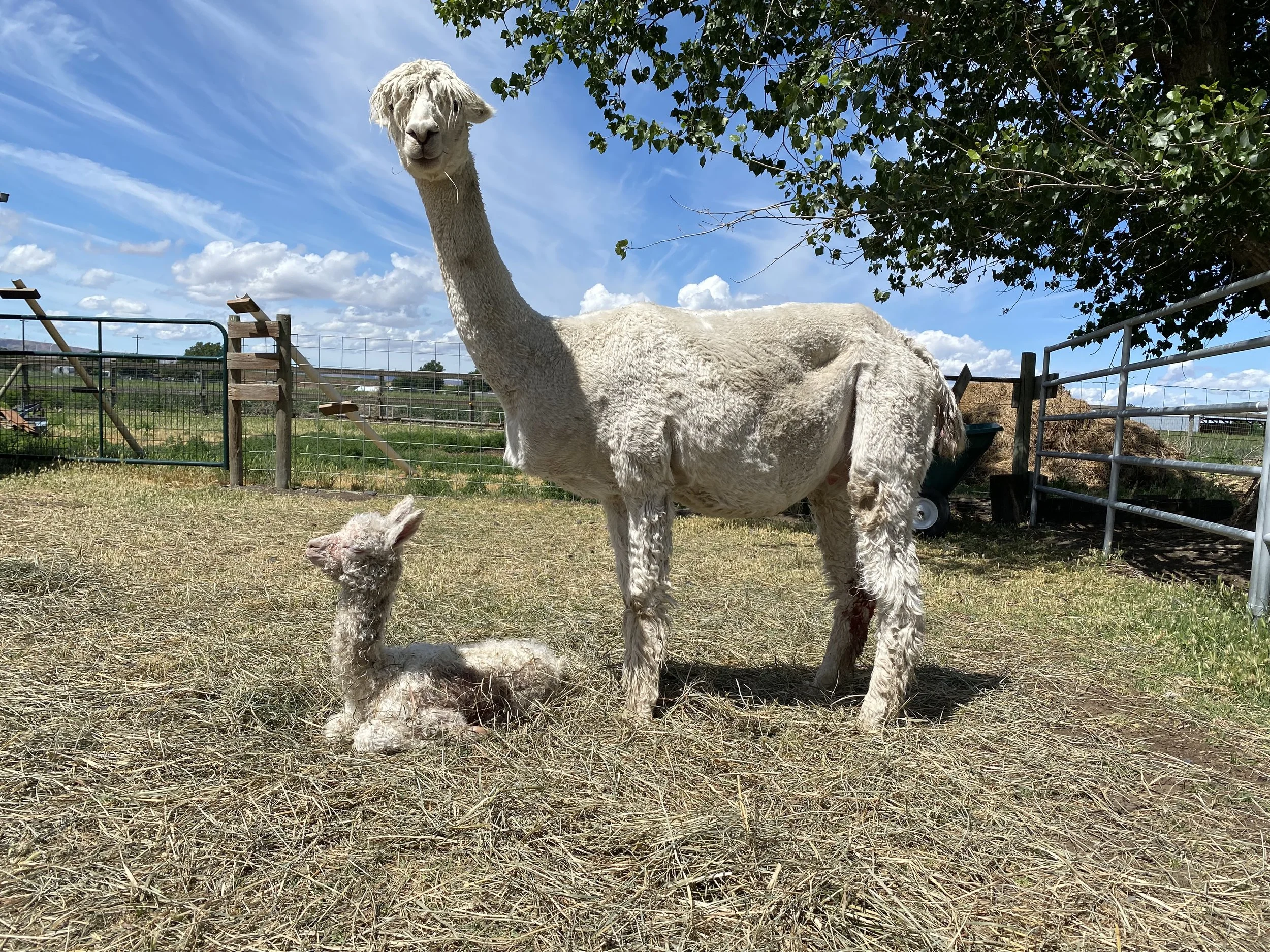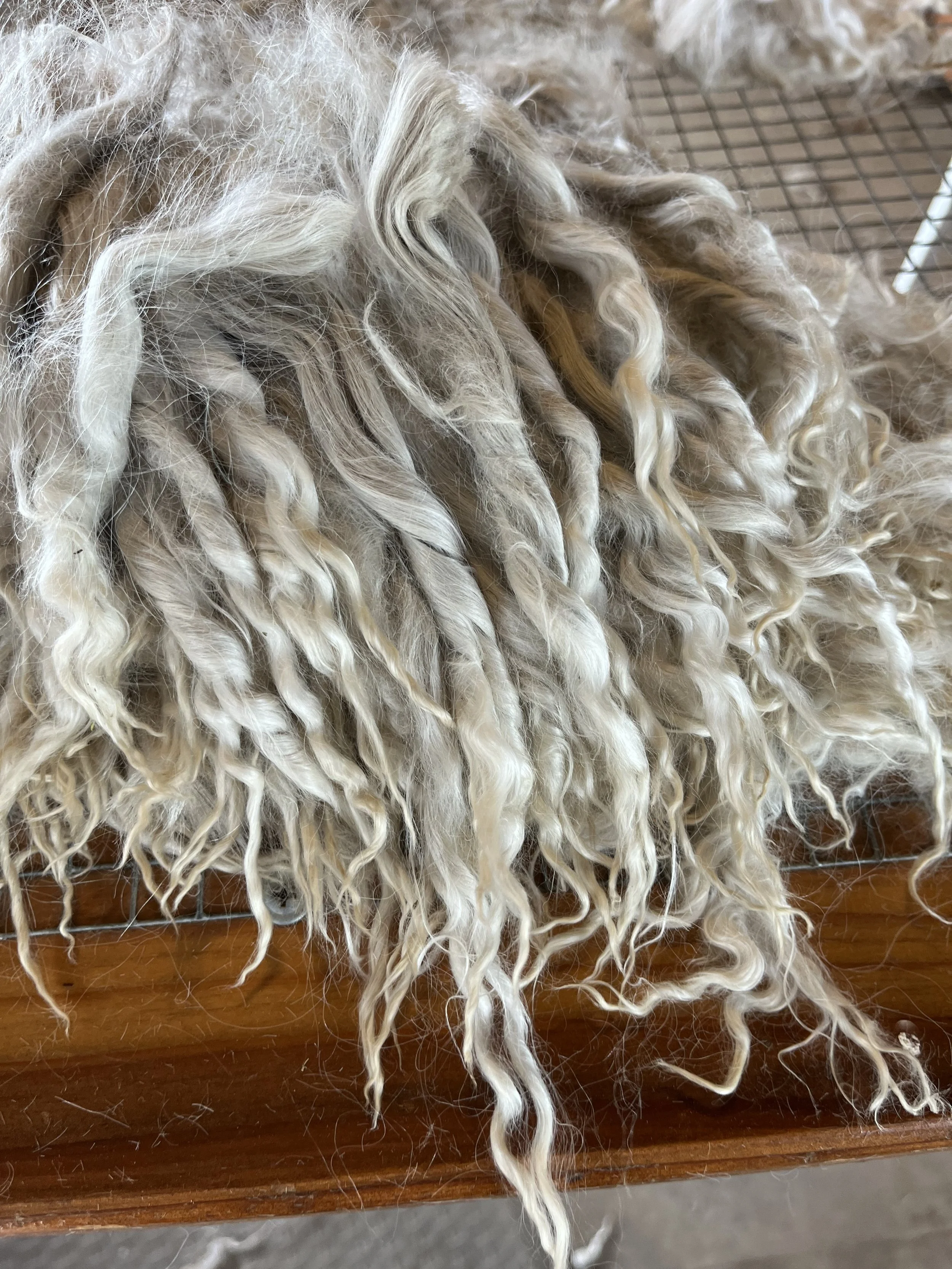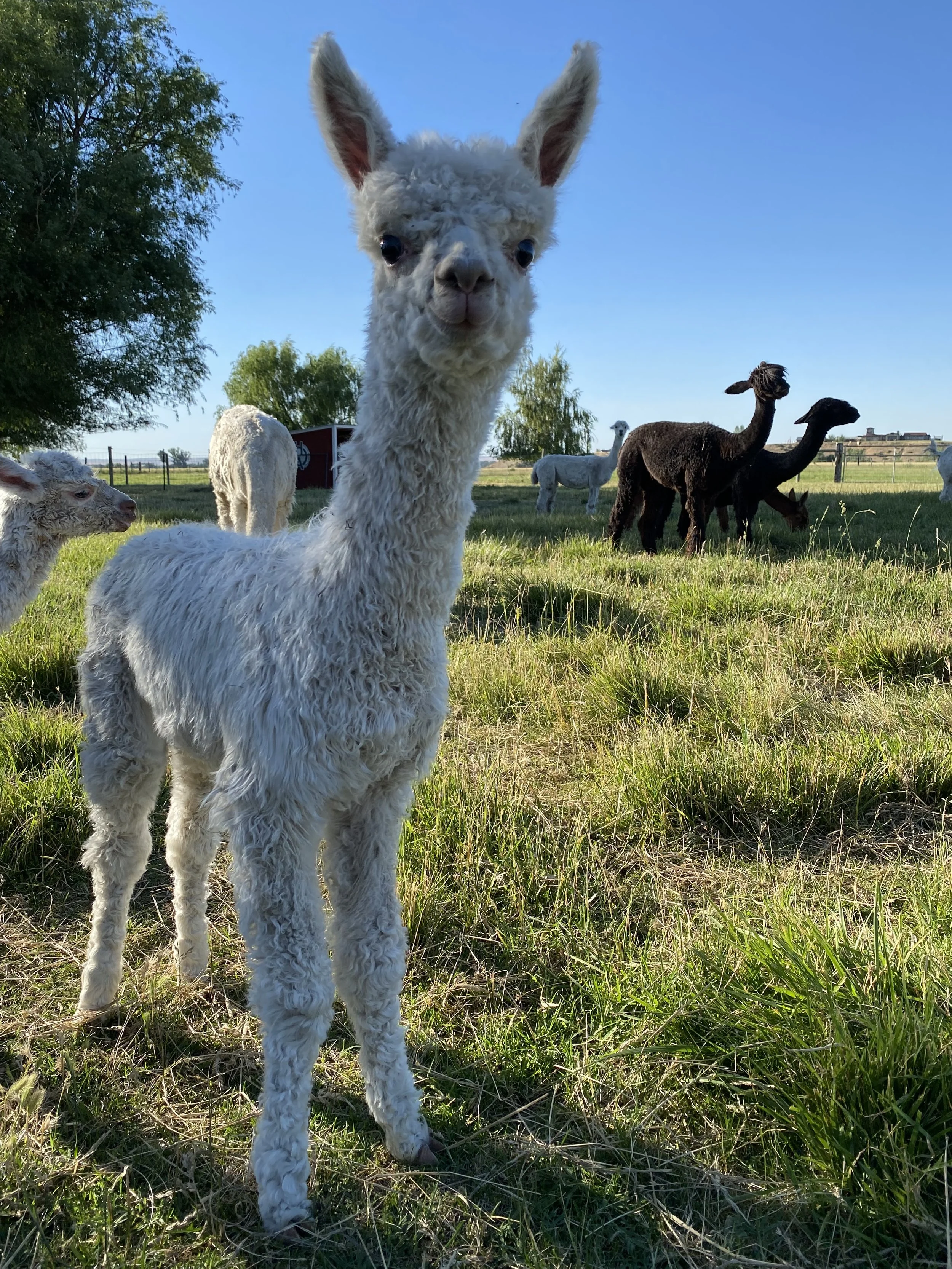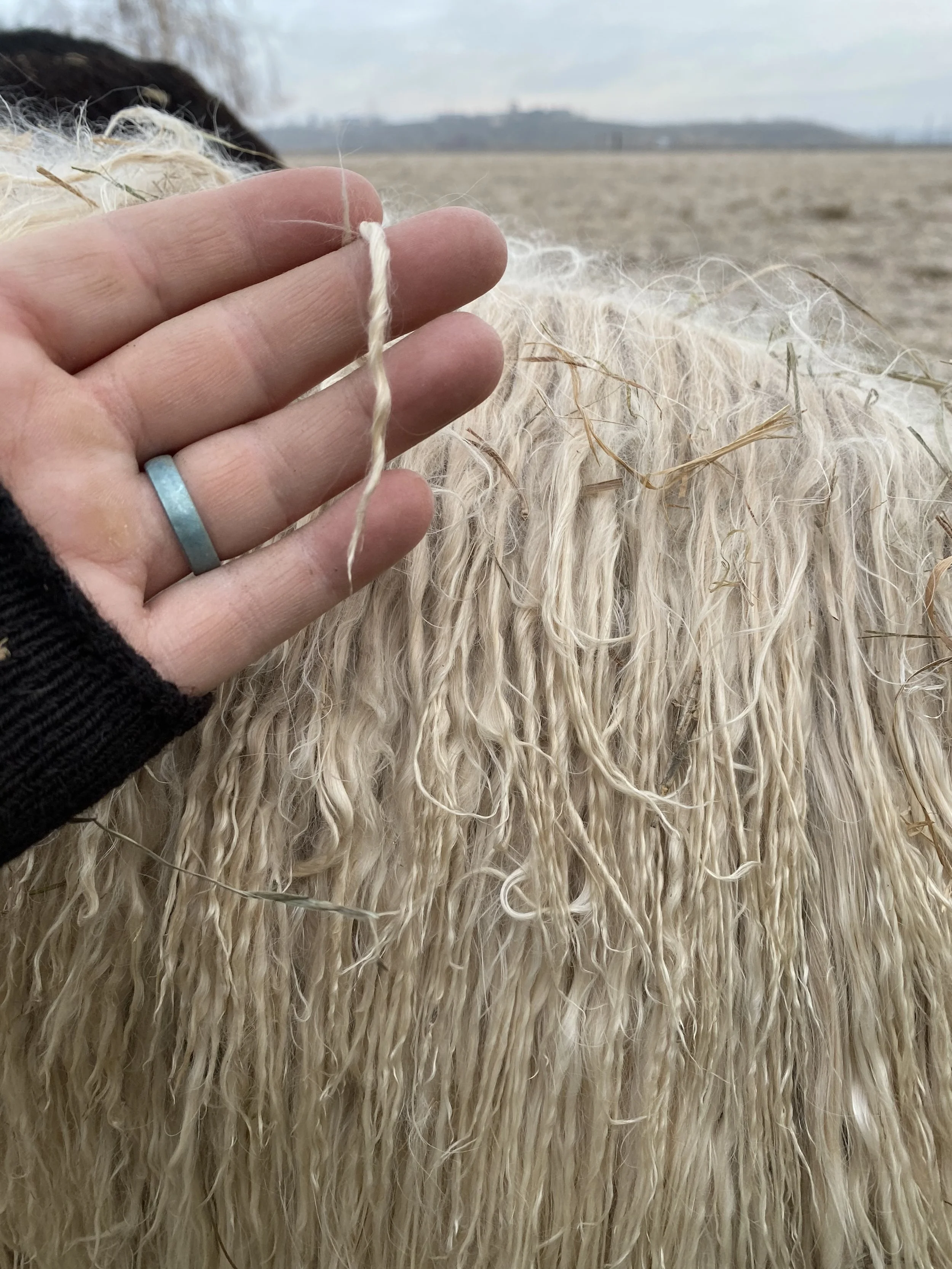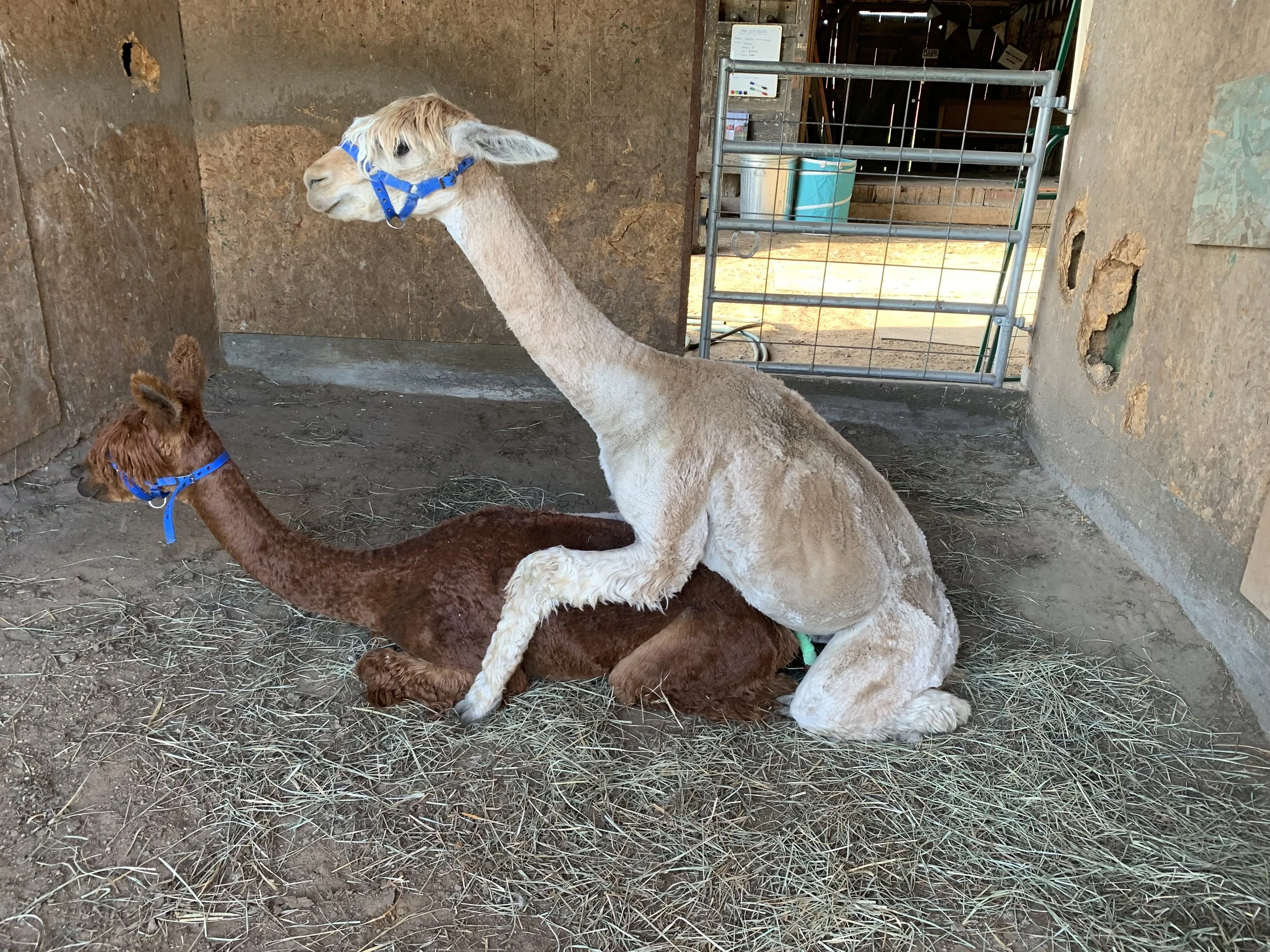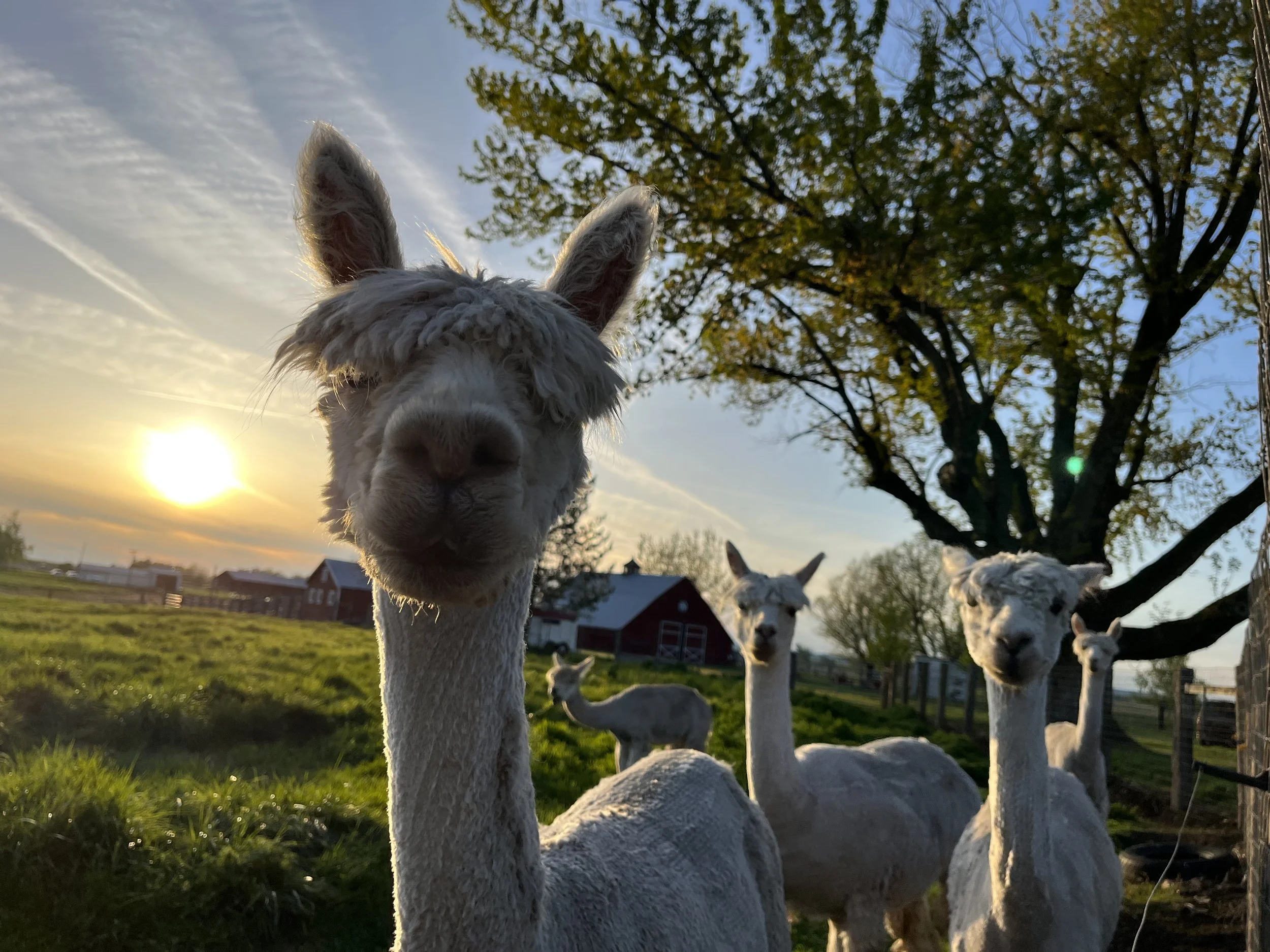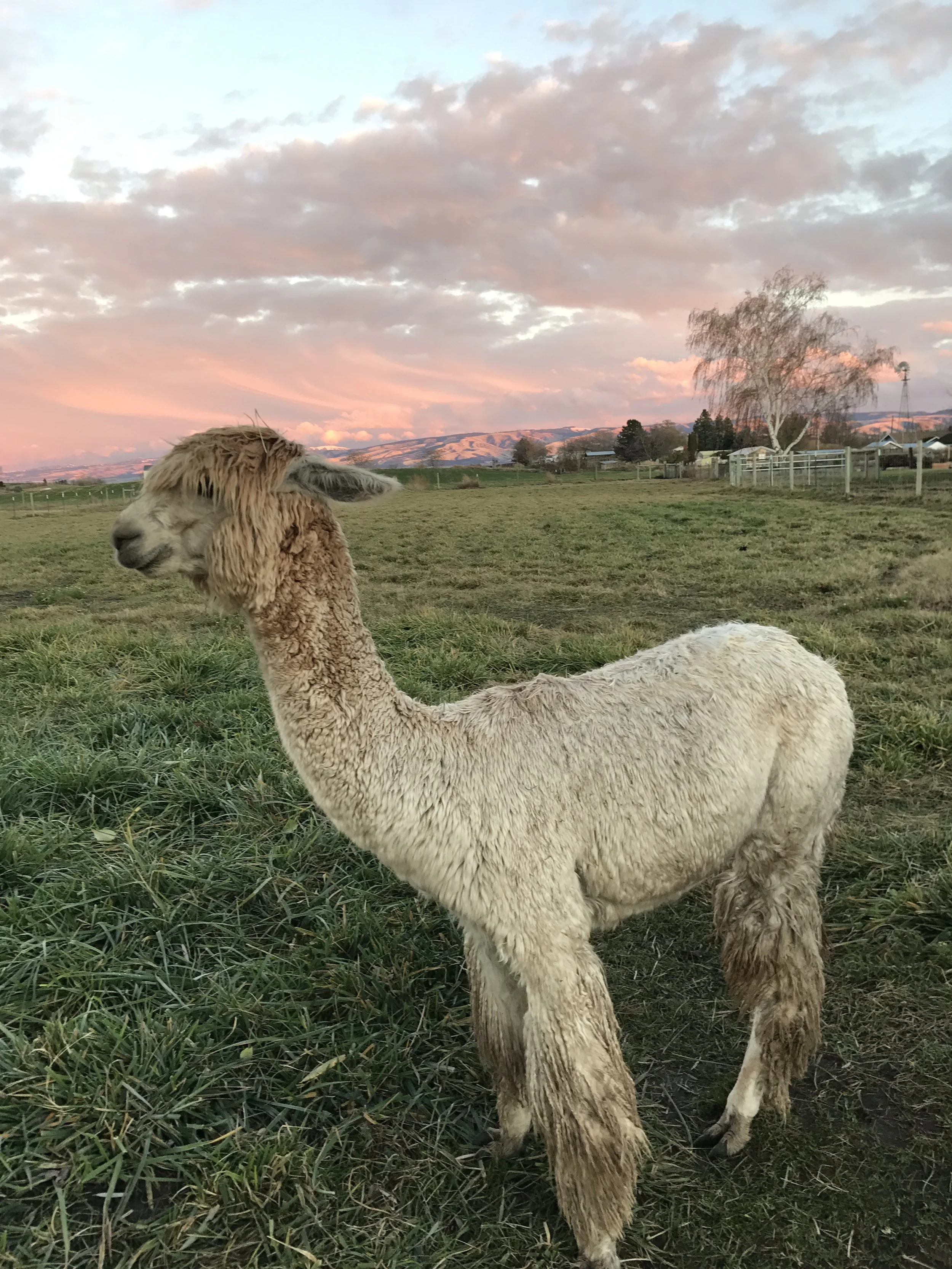Alpaca seeds
Spring is for sowing!
Not just seeds for cut flowers to make bouquets.
Not just seeds for dye plants to color the fiber.
But little baby alpaca seeds, too! That’s right - it’s alpaca baby making season here on the farm!
I thought I’d answer some of the most frequently asked questions about alpaca breeding.
WHO.
Since we are a fiber production herd —versus a seed stock operation that is in the business of selling the animals— my approach to focuses on producing the amount of fiber that I can sell in a given year.
Who gets selected for breeding is a very thoughtful process. These creatures can live for nearly 20 years, so it’s never a hasty decision.
Not everyone of breeding age gets bred. And not everyone who is bred actually has a baby — ask me how I know! :-)
Since I’m the only one working the herd on a daily basis, I’m extra picky.
My criteria for selecting the mamas-to-be generally focuses on —
Who’s a good mom/easy birther?
Do they have the genetics I need?
Do they have an agreeable personality?
Okay, so I bet you think that last one is a joke but it so isn’t!
Personality is a heritable trait. The alpaca can check the first 2 boxes but be a total jerk — I’m looking at you Sugar & Sofia — they’ll get scratched from the list in a hurry!
When it comes to the boys, I really focus on genetics & numbers - and this is where it gets a little nerdy…
WHAT.
Every alpaca regardless of sex gets a fiber analysis. Generally, it’s done with their first shearing - and I’m currently awaiting the analysis results for Hammie, Bernie, Earl and Reba.
A small portion of their fiber is sent to a lab where it is analyzed under a microscope to determine the diameter of each fiber, amongst several other things.
That information is fed to our breed association who maintains a database of all the registered alpacas in North America.
The fiber analysis information for each alpaca is used in a very robust and complicated (read: I can’t really explain it) statistical equation to determine what each parent is likely to produce in terms of fiber traits, based on its ancestry and any existing offspring.
This equation is called the Expected Progeny Difference (EPD).
As new progeny are born, the EPD for each animal is adjusted annually to account for actuals (fiber analysis of each offspring).
Pretty much every commercially farmed type of livestock has an EPD program to help producers make the best genetic choices. For example - beef producers select for easy of birth and high birth weight; dairy cattle also seek easy birthers but they’re also looking for productive milkers.
As a fiber producer, I’m shooting for is fine fibers (small diameter) and lots of it (density).
WHEN.
Alpacas are induced ovulators — this means the act of mating causes ovulation. In contrast, human females have an estrous cycle that releases the egg.
Alpacas are also different from other ruminants (like sheep & goats) whose ability to ovulate are dependent on seasonal daylight length. That’s why you may’ve heard it referred to lambing or kidding season.
As induced ovulators, that means a reproductively mature alpaca can technically be bred at any time of year.
Although it’s nice to have the flexibility to breed whenever, I’ve learned that having spring babies is most ideal.
Being born in spring means they’ll have all season to grow on fresh grass. There’s nothing I love more than a robust little body going into winter!
And when the cold season arrives, they’ll have been alive long enough to have grown a full coat to keep them warm. It’s better for them and means less management & worry for me!
Another key component of when is that I try to have them all born as closely together as possible. So that means I time all breedings very closely together.
The idea here is that concentrating their birth dates means they’ll have playmates — and that’s a key part of development for a herd animal. Plus all other milestones (weaning, halter training, vaccination) happen as a group and that just makes herd management easier.
WHY.
The choice to breed — whether that’s a particular animal or anyone at all — boils down to need.
Every year I analyze the quality of my annual fiber clip.
As alpacas age, their fiber tends to get course over time. And with the steep cost of fiber processing (taking it from raw fleece to finished yarn), I only process the best fiber.
Just as an alpaca will ‘age out’ of breeding, they’ll also age out of my fiber processing plan. What that means is — although they still grow fiber, it won’t be used for our knitwear or yarn.
Don’t worry, though! All that means is that they get to be full fledged free loaders here on the farm :-)
I strive to produce only what I can reasonably sell in a year. For me, a stock pile of unprocessed fiber not only takes up space, but costs too much to produce to sit idle.
It’s been so rewarding to see our knitwear be in such high demand. I’m often asked why I don’t have more alpacas to increase or scale my business.
Just as I have finite time in working the herd I already have, I also have finite space. I’ve gotta keep the sexes separate because of that whole induced ovulator part, and that means I’ve got to be very diligent in managing the pastures.
Feed is their single most expensive input, so I want to graze them as long as possible before I need to buy hay. The farm is not big enough to allow for foraging as well as hay production.
Ideally, I want them on grass from March through October. In order to do that, I rotate each herd between two pastures.
I guess the more direct way to say it is — I have to optimize my fiber production with my pasture’s ability to sustain them.
Right now, I seem to be on an every-other-year breeding cycle. As you can imagine, birthing is a bit stressful even when things happen “like they’re supposed to” — having an off year allows me to reboot and honestly forget just how stressful it was.
HOW.
It usually takes just one breeding for a healthy, proven mama to conceive. I’ll attempt up to 3 times, spaced 7 days apart each time.
Mamas will be pregnant for 11 months. Once born, the baby will be with them for about 8 months before they’ll be weaned.
If you’re curious to know some of the more technical parts of the how, I wrote a bit about it on this blog here.
MY 2022 BREEDING PLAN
Thanks for sticking it out to the end!
I’m happy to share that this is going to be the very first year that our own stud stock is going to be used!
These past 8 years we’ve built our herd using the superior genetics of our mentors. It has taken a long time to get to the point where our own animals meet all the criteria to be used in the breeding program.
Without further ado, here are my studs and their anticipated mates.
Legend is bright white 5 year old Virgo.
He arrived on our farm as a scrawny 2 year old and has grown into a solid fella. His fleece has beautiful tight curls that I often needle felt. I’m hoping he passes some of that curl on! Legend is one of my more mellow males, he rarely starts fights but also won’t back down when challenged.
Legend will be bred to Birdie, Beans and Hoosier.
Mr. Rainier is light fawn 6 year old Libra.
He spent a significant portion of his yearling days at our farm before hitting the show circuit. Rainier is stout and dense, and probably the most chill — second only to Willie. He’s easy on the lead and I’ve never seen him in a scuffle.
Rainier will be bred to Riff Raff and potentially RBG.
Both Legend & Rainier are unproven, so this is technically their first rodeo. I have a feeling they’ll do just fine!

